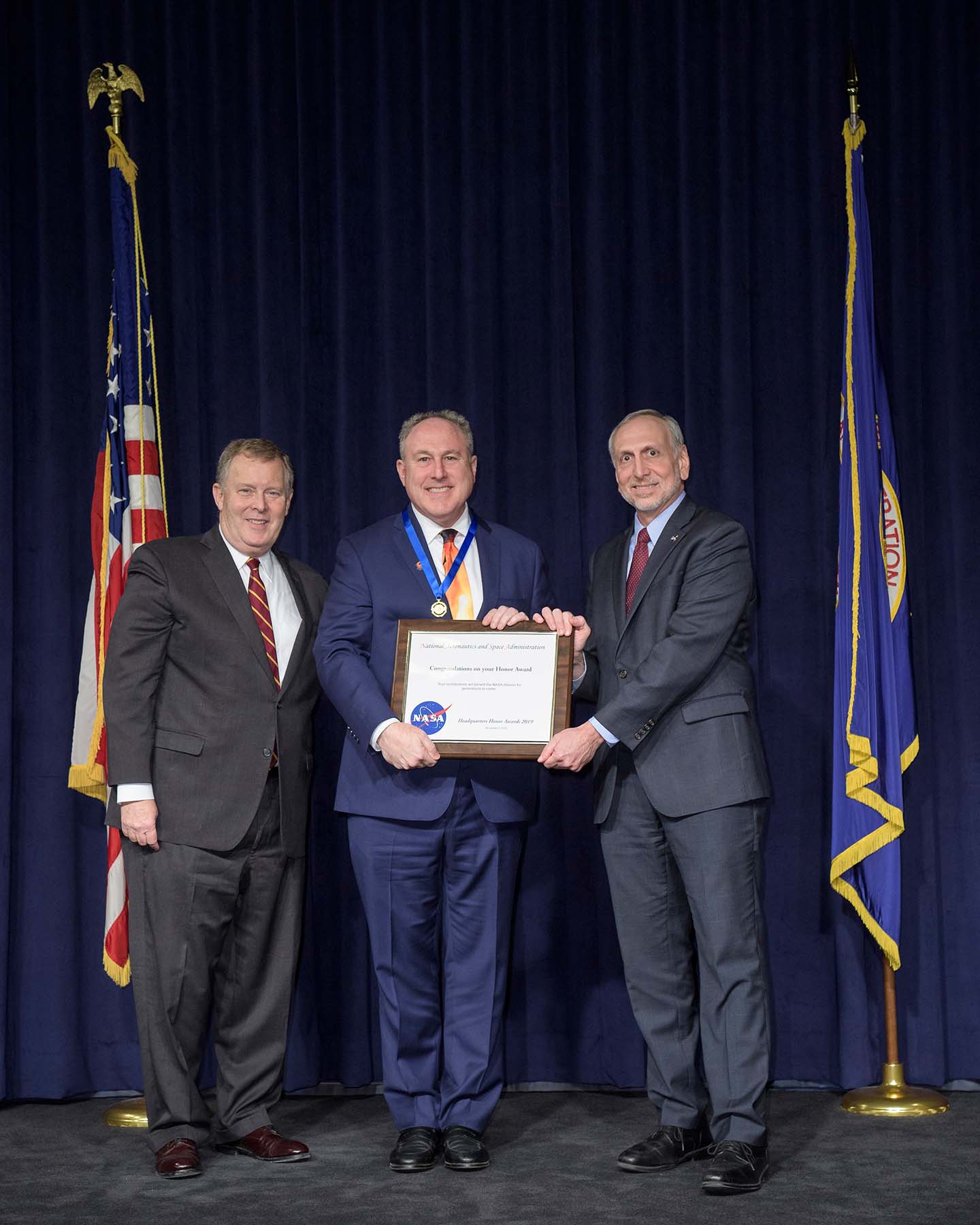Press Release
Johns Hopkins APL’s Andy Driesman Awarded Leadership Honor by NASA
It takes a lot of teamwork, skill and expertise to get any space mission off the ground — particularly humanity’s first-ever spacecraft built to fly through the Sun’s atmosphere.
In recognition of his leadership of the team behind Parker Solar Probe, Andy Driesman of the Johns Hopkins Applied Physics Laboratory was awarded NASA’s Outstanding Public Leadership Medal on November 5 in a ceremony at NASA headquarters in Washington, D.C. This award acknowledges sustained, high-impact leadership accomplishments by a nongovernment employee that significantly influenced the NASA mission and goals.
“It has been an incredible honor leading the team that developed this revolutionary mission,” said Driesman. “Good leadership is critical to success for a project, and having this success recognized by NASA is extremely meaningful. I extend my thanks to the Parker Solar Probe team at APL and all our partners, who dedicated so much of our professional and personal time toward this mission.”
Parker Solar Probe, launched on August 12, 2018, has already completed three of a planned 24 orbits of the Sun. There are four instrument suites on Parker, gathering data on particles, waves and fields related to the Sun’s corona, solar wind and the solar environment. In November 2018, Parker Solar Probe became the closest spacecraft to the Sun when it passed within 15 million miles of our star; at the time, it was traveling at 213,200 miles per hour, making it the fastest human-made object in history. The spacecraft will eventually reach speeds of 430,000 miles per hour and pass within 4 million miles of the Sun.
As the Parker Solar Probe project manager, Driesman and the team managed all elements of the project, including leading a team of APL, industry, academia and government partners and suppliers, while also juggling the technical, cost and schedule planning for the mission.
Driesman, who became project manager for Parker Solar Probe in 2011, said that the job of an effective leader is to clear the way for the team to do the best job it can, and to enable the team to operate at a peak level. “The key on Parker Solar Probe was sustaining the team — keeping the technical excellence at a high level during a long and challenging process,” he said.
“Parker Solar Probe was successful because of the team that worked to design, build, test and fly this unique spacecraft,” said Driesman, “and because of the leadership that made sure the team had what it needed to do its job. It’s a symbiotic relationship; our success is dependent upon each other.”
Driesman joined APL in 1997, later working on the twin Solar TErrestrial RElations Observatory (or STEREO) spacecraft as mission system engineer. After being detailed to the National Oceanic and Atmospheric Administration to work on the Joint Polar Satellite System in 2011, he returned to APL as program manager for Parker Solar Probe. Following the successful launch and initial operations of Parker Solar Probe, Driesman now serves as the project manager for Interstellar Mapping and Acceleration Probe (or IMAP), a NASA mission to study the interface between our solar system and interstellar space; and the spacecraft program manager for Dragonfly, a NASA mission that will send a rotorcraft to explore Saturn’s largest moon, Titan. He holds a master’s degree in technical management from Johns Hopkins University and bachelors’ degrees in electrical engineering and geology from Tufts University.
